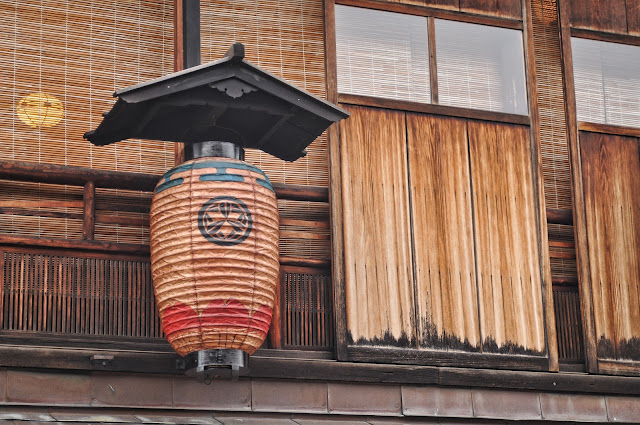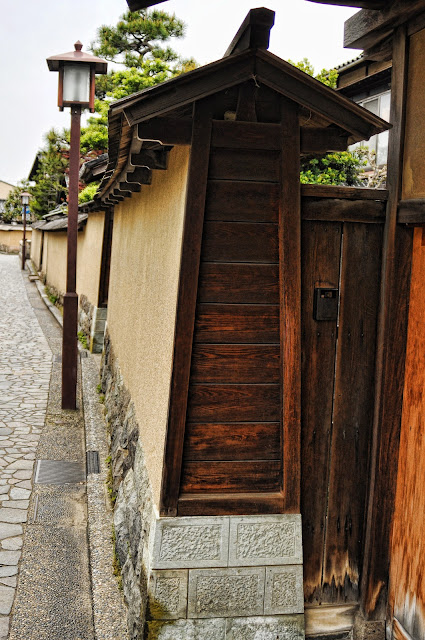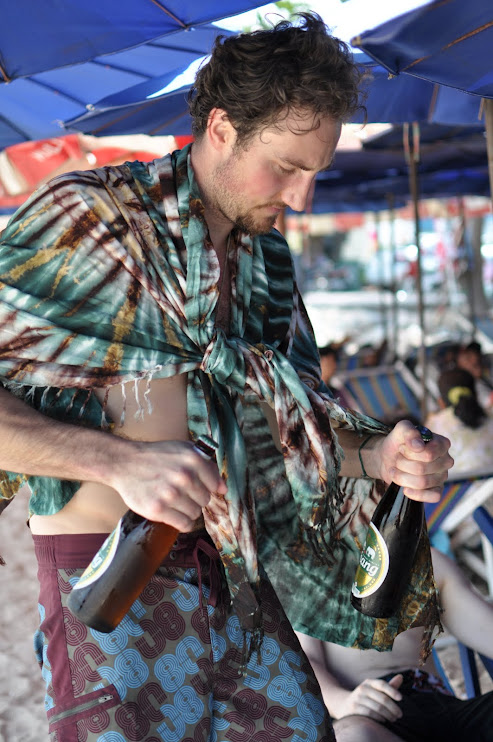 |
| The almost mandatory facial expression accompanying that sound |
The catalyst drawing out that awkward sound was what hippies and homeless people alike know to be fishing for rides with your thumb. Apparently hitching in Japan is a long forgotten art practiced only in the remote regions of the mountainous northern island of Hokkaido. Everywhere else is so spectacularly connected by trains and buses that it makes the neural network of the brain blanch a goofy-green in envy. This much was told to me.....several times a day....by young and old alike....following that sound. Thousands of years of writing have given modern society various descriptions of the intricicies of Hell, but add this one to that list; imagine a sound, innicially not too irritating, perhaps even a novelty at first, but altogether completely foreign. For example , the first time you sit on a vinyl chair and it makes that farting noise. Follow this with an over-used expression/reference, Mom saying, "you'll break your neck" or if you're a child of the 90's lets say Alanis Morissette's "Ironic." Shake this combination well and pour over ice. Check yourself for a pulse, if you find one repeat steps one through seven.
It was with this solid spot of hellish pre-departure exposure that I set out the first day of Golden Week hoping to make it 630km by sundown. Immediately I experienced a half-forgotten sensation like a line of gunpowder taking its time to assuredly burn through my veins. Though that powder keg had fiery confidence, I was feeling the rush of uncertainty, that cold sweat on an 80 degree day of not knowing where you'll be sleeping that night, not a step but a leap, a bound outside of the circle of comfort, or possibly just the satisfying crunch of routine being dashed to bits by a million car motorcade on an exodus from the city. Back to adventure... I got off to a good start thumbing down a ride after only 6 minutes of waiting (it must have been the hope wrangling emoticon gleefully gracing my sign!)
 |
| This is what I started out with |
A Chinese graduate student on her way to Hachioji, hell getting out of the city is half the battle! Next were two Japanese women who dropped me just outside of the on-ramp to the 中央高速 (Chuo Kousoku, one of the main expressways) but before departing they insisted I change my sign. "It has too much writing on it for drivers to read, they can't see it all" she said to me in Japanese. In retrospect, the principles of this idea were good but what she said next would eventually lead me to trouble. "We'll write you a new kanji on the way to your destination." And after conferring with her friend, "Nagano should work!" I now realize that I should have stepped in at this point. Having been prepped with the notion that the vast majority of Japanese people know about as much about hitch-hiking as an ant knows about astronomy (regardless of what Disney would have you believe), I should have kindly exited the vehicle and politely thanked them for the ride. Insert gambler's logic here: you don't walk away from the table when the dice are hot! I was on a roll, two rides and so far a total wait time of around 10 minutes. That's better than most of the major train lines. And to boil it down to reality I'm lazy as hell when it comes to something as focus-demanding as writing kanji.
Flash forward 2 hours, dehydration and the beginings of a sunburn are weighing heavily on my now sagging resolve. WTF? Did I miss the morning rush? Should I have shaved off my beard after all? Retiring to the shade of a nearby tree an idea strikes me, "baby steps." I'm in a country full of hitching virgins, it's only logical this'll have to be taken slow! I erase the sign and start afresh, carefully copying the complicated characters from the map I have. A service area/rest stop about 30 km from here should do it. Wouldn't you know it, not 10 minutes pass before a retired man in a BMW pulls over. Back at it! So it was in this way that I slowly proceeded across 4 of Chubu's (middle Honshu) 9 prefectures. However, by the time the fat old sun in the sky was yawning it's last of the day's red rays, I was still quite a ways from my intended destination (Kanazawa). There was nothing to do but call it a day. Thankfully I was in a town, so I began inquiring if there was any cheap accommodation about. Just my luck, there was a youth hostel, whereupon after checking in I ran into a girl I'd met last October in Kyoto. It beats the hell out of having diner alone. Small country...
Apparently, the place I was in was renown for it's Edo era wooden streets preserved both because of the superb aptitude of the carpenters of the region and because of the town's geographical location. Technically it was part of the territory of the Tokugawa Shogunate, but because it was relatively inaccessible, it remained isolated and was able to develop it's own culture. I'd just stumbled into Takayama (高山市) meaning 'High/Tall Mountain' which is indeed, as you might have guessed, high up in the mountains. This last fact was of particular delight as it meant that the cherry blossom season was later in the year than the low-lying major cities in Kanto and Kansai. Bring on another round of Hanami! Also, I was more than a little surprised when the woman at the tourist information office told me Takayama is a sister city of Denver, Colorado.
The next day, after checking out a local morning market, I hit the road again, this time, like a seed cast into the wind, side-tracking to a UNESCO World Heritage Site. The village of Shirakawa-gō (白川郷, "White River Old-District"), located even further up in the mountains than Takayama, is well know for houses constructed in the style of gasshō-zukuri (合掌造り meaning prayer-hands construction). In the west we'd call it an 'A-frame' house although these are made with thatched roof that slant so steeply they conjure up images of two hands clasped in prayer. The unique design originated because of the amount of snow the region gets in the wintertime. The steep roofs are able to shed snow like a ship's rudder slipping through the water.
 |
| Here's me with the child of one of families that picked me up |
Finally, after 2 more rides, I arrived in Kanazawa (金沢 meaning Golden Marsh). The name of this city is said to come from the legend of a peasant-farmer who was digging for potatoes one day and found gold flakes instead. Regardless of whether or not this is true, the city is responsible for producing 99% of Japan's high-quality gold leaf, including the gold leaf that covers the Golden Pavilion in Kyoto.
Kanazawa somehow managed to stay off the radar of the American Air-force fire bombing campaign during WWII and the vast majority of its architectural heritage remains intact. This means that while wandering in the city it's not uncommon to find yourself peacefully canal-side one moment and trekking through Edo period Samurai or Geisha districts the next. Overall I found the city to rich in historical wealth as well as boasting some outstanding seafood. Here are some photos from around the town.
 |
| In order to prevent the heavy winter snows from damaging this ancient pine, they've reinforced the branches with sturdy stilts. |
 |
| In the city there's also a hands-on (the best kind) 21st century modern art museum. Unfortunately, no cannonballs allowed at this exhibit. |















